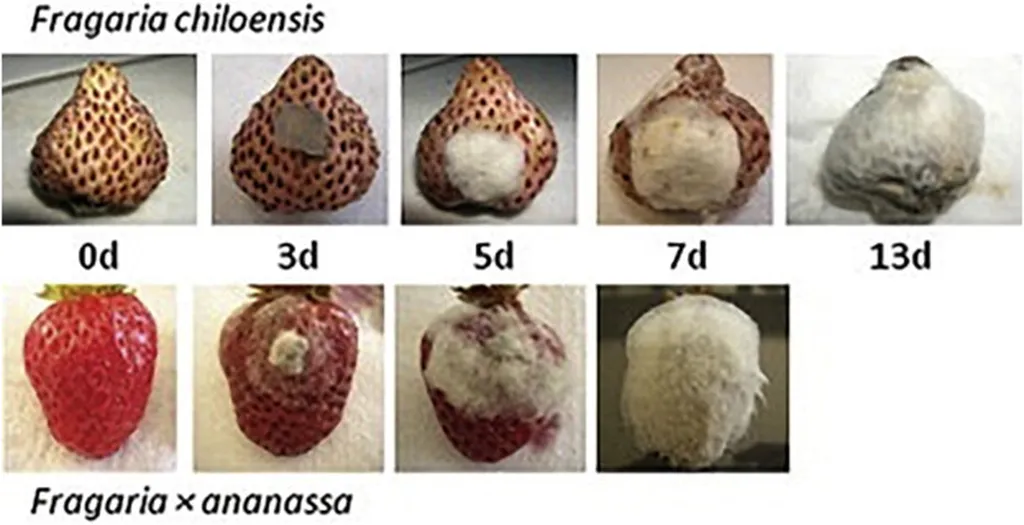In the heart of Chile, a humble strawberry plant is at the center of a groundbreaking study that could reshape our understanding of sustainable agriculture. Researchers, led by Carlos Farkas from the Laboratory of Biomedical Research at the Universidad Católica de la Santísima Concepción, have delved into the microbial world surrounding the roots of Fragaria chiloensis, both in its wild and cultivated forms. Their findings, published in *Current Research in Microbial Sciences* (translated as *Current Research in Microbial Sciences*), offer a glimpse into how domestication has dramatically altered the rhizosphere microbiome, potentially paving the way for innovative agricultural practices.
The study employed high-throughput metagenomic sequencing to compare the microbial communities of wild and cultivated strawberry plants. The results were striking. Wild strawberries, known as f. patagonica, were found to harbor a microbiome dominated by Frankia and Bradyrhizobium, while cultivated “white strawberries” (f. chiloensis) exhibited a broader diversity of genera. Despite this difference, the core ecological functions remained intact, thanks to a phenomenon called functional redundancy.
“Domestication has reshaped the microbial landscape around the roots of these plants,” Farkas explained. “This reshaping is not just about diversity; it’s about how these microbes contribute to the plant’s ability to adapt to stress and thrive in different environments.”
The study also highlighted the role of high-biomass taxa in both wild and cultivated plants. In wild plants, Frankia was prominent, while Nocardia took center stage in cultivated plants. Both of these microbes harbored extensive biosynthetic gene clusters, suggesting a link between robust plant growth and the production of specialized metabolites that aid in osmoprotection.
The implications of this research are far-reaching. Understanding how domestication influences the rhizosphere microbiome could lead to the development of more resilient and sustainable crops. This aligns with the principles of One Health, an approach that recognizes the interconnectedness of human, animal, and environmental health.
“By harnessing the power of these microbial communities, we can potentially enhance crop resilience and reduce the need for chemical inputs,” Farkas added. “This could be a game-changer for sustainable agriculture.”
The findings also open up new avenues for research in the energy sector. As the world seeks to reduce its reliance on fossil fuels, the development of bio-based products and processes becomes increasingly important. The specialized metabolites produced by these microbial communities could hold the key to new bio-based materials and energy sources.
In conclusion, this study not only sheds light on the intricate relationship between plants and their microbial partners but also offers a promising path forward for sustainable agriculture and bio-based industries. As we continue to explore the microbial world, we may unlock even more secrets that could revolutionize the way we grow our food and power our lives.

